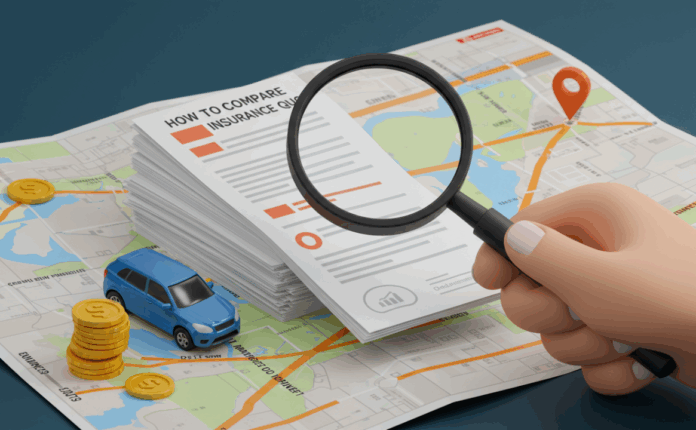Insurance is essentially a financial safety net that protects individuals, families, and businesses from unexpected losses or risks. At its core, it involves paying a regular fee—known as a premium—to an insurance company in exchange for their promise to cover specific costs if a covered event occurs, like an accident, illness, or natural disaster. This concept dates back centuries, evolving from ancient maritime trade protections to today’s sophisticated policies covering everything from your car to your health.
In a world full of uncertainties, insurance provides peace of mind and financial stability. For instance, without health insurance, a single hospital visit could lead to crippling debt; with it, you’re shielded from the bulk of those expenses. However, navigating insurance can feel overwhelming due to jargon, varying policies, and hidden clauses. This article breaks it down into digestible parts, offering practical advice to help you make informed decisions, save money, and avoid common traps.
Understanding the Basics of Insurance
Key Components of an Insurance Policy
Every insurance policy has fundamental elements that dictate how it functions. The premium is the amount you pay periodically (monthly, quarterly, or annually) to keep the coverage active. Think of it as the cost of entry into the risk-sharing pool.
Next is the deductible, which is the out-of-pocket amount you must pay before the insurer steps in. For example, if your auto insurance has a $500 deductible and you file a claim for $2,000 in repairs, you’ll pay the first $500, and the insurer covers the rest. Choosing a higher deductible can lower your premium but increases your immediate financial responsibility during a claim.
Coverage limits define the maximum amount the insurer will pay for a claim. Policies often include exclusions—situations not covered, like intentional damage or wear-and-tear. Finally, riders or endorsements allow customization, such as adding flood coverage to a standard homeowners policy.
The Role of Risk Assessment
Insurers use actuarial science to evaluate risks based on data like your age, location, health history, or driving record. This determines your premium. For actionable insight: Regularly review your policy to ensure it aligns with life changes, such as moving to a safer neighborhood, which could qualify you for discounts.
Major Types of Insurance and Their Benefits
Insurance isn’t one-size-fits-all; different types address specific needs. Here’s a breakdown of the most common ones, with tips on when and why to consider them.
Life Insurance: Protecting Your Loved Ones
Life insurance pays a lump sum (death benefit) to your beneficiaries upon your passing, helping cover funeral costs, debts, or lost income. There are two main types: term life, which covers a set period (e.g., 20 years) at a lower cost, ideal for young families; and whole life, which builds cash value over time but is pricier.
Actionable tip: Calculate your needs by multiplying your annual income by 10-15 years, plus major debts like mortgages. Shop for quotes from multiple providers—differences can save you hundreds annually. If you’re healthy, lock in rates early, as premiums rise with age.

Health Insurance: Safeguarding Your Well-Being
Health insurance covers medical expenses, from doctor visits to surgeries. In many countries, it’s mandatory or heavily subsidized. Key plans include HMOs (requiring primary care referrals) and PPOs (offering more provider flexibility but higher costs).
With rising healthcare costs, this is crucial. For example, in the U.S., average annual premiums for family coverage exceed $20,000, but employer-sponsored plans often cover a portion. Tip: During open enrollment, compare plans using tools like out-of-pocket maximums (the cap on your yearly spending). Preventive care, like annual check-ups, is often free—use it to catch issues early and avoid bigger bills.
Auto Insurance: Essential for Drivers
Required by law in most places, auto insurance protects against vehicle damage, liability for injuries to others, and theft. Basic coverage includes liability (for others’ damages), collision (your car in accidents), and comprehensive (non-collision events like hail).
To save: Maintain a clean driving record, bundle with home insurance for discounts (up to 25%), and consider usage-based programs that track safe driving via apps. If you’re buying a car, check insurance rates first—sports cars cost more to insure than sedans.
Homeowners and Renters Insurance: Shielding Your Property
Homeowners insurance covers your dwelling, personal belongings, and liability if someone gets hurt on your property. Renters insurance is similar but excludes the building structure, focusing on contents and liability—often overlooked but vital for apartments.
Real value here: Inventory your possessions with photos and receipts to streamline claims. In high-risk areas (e.g., flood zones), add specialized riders. Tip: Raise your deductible to $1,000 or more to cut premiums by 10-20%, but ensure you have an emergency fund to cover it.
Other Specialized Insurance
- Travel Insurance: Covers trip cancellations, lost luggage, or medical emergencies abroad. Buy it right after booking for pre-existing condition waivers.
- Pet Insurance: Reimburses vet bills; great for breeds prone to issues. Compare reimbursement rates (70-90%) and waiting periods.
- Business Insurance: For entrepreneurs, includes liability and property coverage. Start with a general liability policy if you’re freelancing.
How to Choose and Manage Your Insurance Effectively
Selecting insurance involves more than picking the cheapest option. Start by assessing your risks: A young urban renter needs different coverage than a suburban family with kids.
Shopping for the Best Policy
Use comparison sites or independent agents to get quotes from at least three insurers. Look beyond price—check customer reviews for claim handling efficiency. Ask about discounts for good credit, safety features (e.g., home alarms), or loyalty.
Actionable steps: Annually review policies during renewal. If premiums spike, negotiate or switch providers. Tools like policy aggregators can automate this.
Filing a Claim: Step-by-Step Guide
- Document Everything: Take photos, gather witness info, and note details immediately after an incident.
- Notify Your Insurer Promptly: Most policies require reporting within 24-72 hours.
- Provide Evidence: Submit forms, receipts, and police reports as needed.
- Follow Up: Track your claim status; appeal denials with additional proof if necessary.
Tip: Keep digital copies of policies in a secure app for quick access.
Maintaining and Updating Coverage
Life changes like marriage, buying a home, or retiring warrant policy updates. Underinsuring (e.g., valuing your home below replacement cost) can lead to partial payouts. Conversely, overinsuring wastes money.
Common Mistakes and How to Avoid Them
Many people err by not reading the fine print, leading to denied claims. Avoid this by reviewing exclusions annually. Another pitfall: Letting coverage lapse, which can hike future premiums. Set auto-payments to prevent this.
Don’t ignore umbrella policies for extra liability protection beyond standard limits—affordable at $150-300/year for $1 million coverage. Finally, resist impulse buys; always align insurance with your budget and needs.
FAQ
What is the difference between term and whole life insurance?
Term life covers a specific period and is cheaper, focusing on pure protection. Whole life lasts your lifetime, accumulates cash value (which you can borrow against), but has higher premiums. Choose term if you need affordable coverage for a set time, like until your kids are grown.
How can I lower my insurance premiums without reducing coverage?
Bundle policies (e.g., auto and home), improve your credit score, install safety devices, and take defensive driving courses. Also, pay annually instead of monthly to avoid fees.
What should I do if my insurance claim is denied?
Review the denial letter for reasons, gather more evidence (e.g., expert opinions), and appeal within the deadline (usually 30-60 days). If needed, consult your state’s insurance department for free mediation.
Is insurance worth it for low-value items?
For cheap items like old electronics, self-insure by saving money instead. But for high-stakes risks like health or home, insurance transfers unaffordable losses to the insurer.
How does climate change affect insurance?
It increases risks like floods and wildfires, raising premiums in vulnerable areas. Mitigate by choosing resilient homes or adding eco-friendly upgrades for potential discounts.



